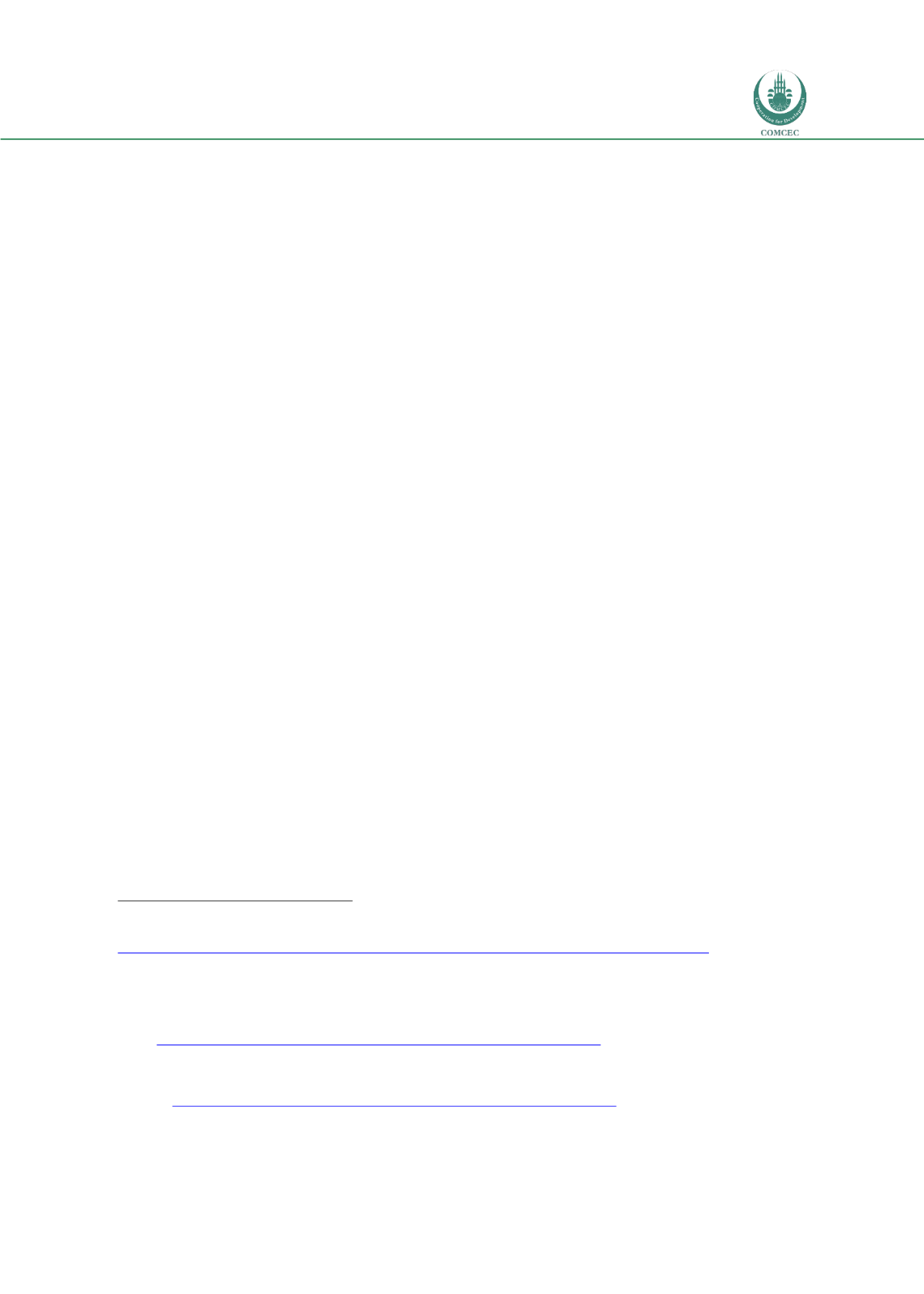

Forced Migration in the OIC Member Countries:
Policy Framework Adopted by Host Countries
143
Education
Refugee children may attend primary schools within the refugee settlements, often also
attended by local Ugandan children, or primary schools in host communities outside the
settlements. Uganda abolished fees for primary education in 1997, enabling refugees to access
free primary education at government schools across the country.
85
Fees for secondary
education were formally abolished in 2006, though this policy is still being implemented.
As of 2012, refugees had access to 124 primary schools and 55 secondary schools in Uganda.
86
In most of the refugee settlements and Kampala, UNHCR partners with a NGO to work closely
with the local government authority and deliver services.
87
UNHCR’s support includes
establishing, funding, and equipping educational infrastructure; recruiting teachers; and
interventions to increase access to all forms of education, including early childhood, primary,
secondary, and tertiary education, non-formal and vocational skills training programs, and
adult education.
88
Alongside national and local government authorities and UNHCR, there are
an array of Ugandan and international NGOs, development agencies, and international
organizations (including other UN agencies, like UNICEF) who also support refugee education
in Uganda. These organizations provide assistance such as funding for infrastructure and
materials, covering additional schooling-related costs, vocational skills training, business skills
training and mentoring, adult education classes, and English language training.
In 2012, three quarters of eligible refugee children were enrolled in primary school; this
dropped to one third for early childhood education, and just 16 percent for secondary
education.
89
Nationally, 94 percent were enrolled in primary education (95 percent for girls,
92 percent for boys) as of 2013; but while enrollment rates are high, completion rates are
lower, particularly in rural areas and for poor children and girls.
90
Enrollment rates for
secondary education remained much lower, at 21 percent in 2010, with very few going on to
pursue tertiary education.
91
Refugee girls were slightly less likely to be enrolled in school than boys; and enrollment rates
varied by setting. For example, most children were enrolled in early childhood education in
Oruchinga and Kiryandongo, but only about one in ten children were enrolled in Adjumani;
similarly, while around half of children were enrolled in secondary schools in Kyangwali,
hardly any children were enrolled in Arua.
92
UNHCR also includes education indicators as part
of its data collection on the South Sudanese refugee situation; across Adjumani, Arua/Rhino,
and Kiryandongo, half of refugee children were enrolled in early childhood education, two
85
This exempts up to four children in each family from paying primary school fees.
86
UNHCR,
The UNHCR Uganda Strategy for Refugee Education 2013-16,
10,
http://fenu.or.ug/wp-content/uploads/2013/02/The-UNHCR-Uganda-Strategy-forRefugee-Education.pdf .87
For example, UNHCR works with InterAid Uganda and Windle Trust Uganda (WTU) in Kampala, with Action Africa Help
International (AAHI-I) in Kyangwali, and WTU in southwest Uganda.
88
UNHCR,
The UNHCR Uganda Strategy for Refugee Education 2013-16.
89
Ibid, 10-12.
90
The World Bank, “Adjusted net enrolment rate, primary,” in “Education Statistics: Core Indicators,” accessed May 23,
2016,
http://databank.worldbank.org/data/reports.aspx?source=Education-Statistics ;and B. Essama-Nssah, “Achieving
Universal Primary Education through School Fee Abolition: Some Policy Lessons from Uganda,” in
Yes Africa Can: Success
Stories from a Dynamic Continent
, eds. Punam Chuhan-Pole and Manka Angwafo (Washington, DC: The World Bank, 2011).
91
The World Bank, “Adjusted net enrolment rate, lower secondary,” in “Education Statistics: Core Indicators,” accessed May
23, 2016
, http://databank.worldbank.org/data/reports.aspx?source=Education-Statistics .92
At the time of publishing this 2012 data, UNHCR noted that their data on enrollment, retention, performance, and
completion remained incomplete. Enrollment data for primary education in Arua and Kirynadogo settlements exceeded 100
percent.
















